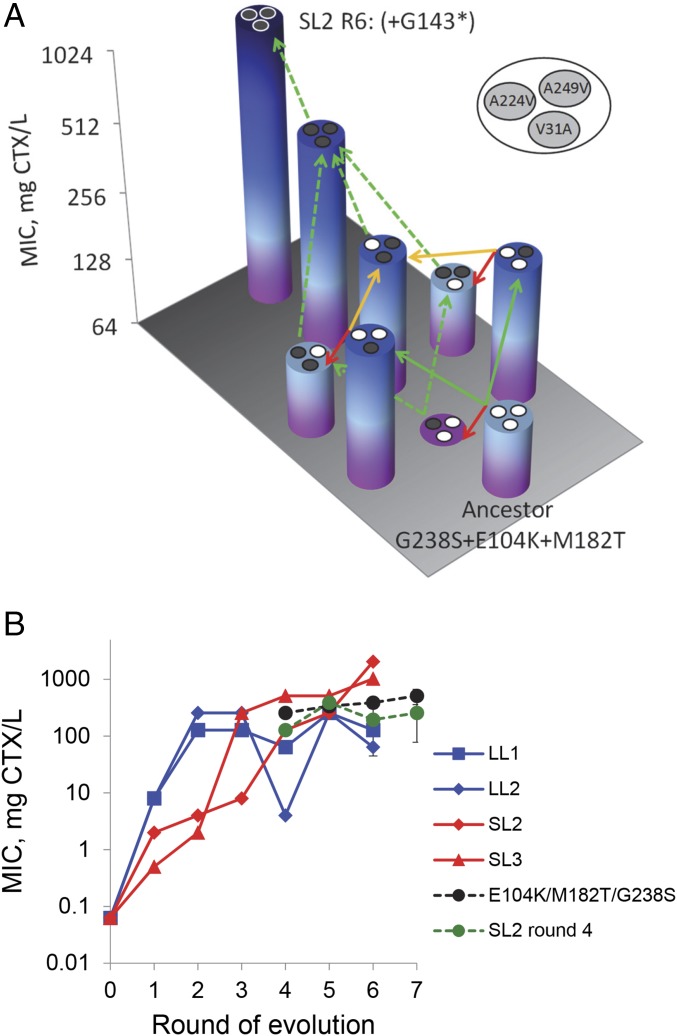Fig. 4.
Understanding the adaptive benefit of SL2. (A) Resistance landscape showing all possible pathways between threefold mutant E104K/M182T/G238S and the sixfold mutant containing all nonsynonymous mutations of final allele SL2; final allele SL2 is also shown. Green arrows indicate an increase in MIC along a mutational trajectory to the sixfold mutant, whereas red arrows indicate a decrease in MIC and yellow arrows indicate neutral steps. Dashed green arrows indicate MIC increases in trajectories that are not accessible due to negative or neutral steps. (B) Comparison of CTX resistance (MIC) of the two high-MIC small-mutation supply lines (SL2 and SL3; red) with the two LL lines containing shared common mutations E104K/M182T/G238S (LL1 and LL2; blue), together with the average resistance of the five replicate lines evolved for three rounds under LL conditions with threefold mutant E104K/M182T/G238S (black) and allele SL2 from round 4 (green; Fig. S6). Error bars are SEM based on MIC variation among the five replicates.

